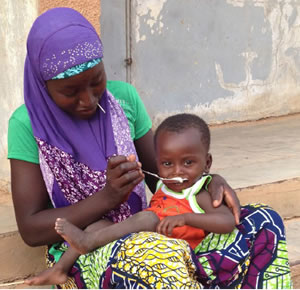SPRING's First Micronutrient Powder Distribution in Namutumba
SPRING/Uganda is implementing a micronutrient powder (MNP) program, focused on children aged 6 to 23 months. “Point-of-use,” or “home-based” fortification is used to reduce the prevalence of micronutrient deficiencies, including iron deficiencies, and anemia in children. SPRING is using two methods for distributing the MNPs and related materials: facility-based and community-based. With the facility method, MNP materials are stored at the facilities.
